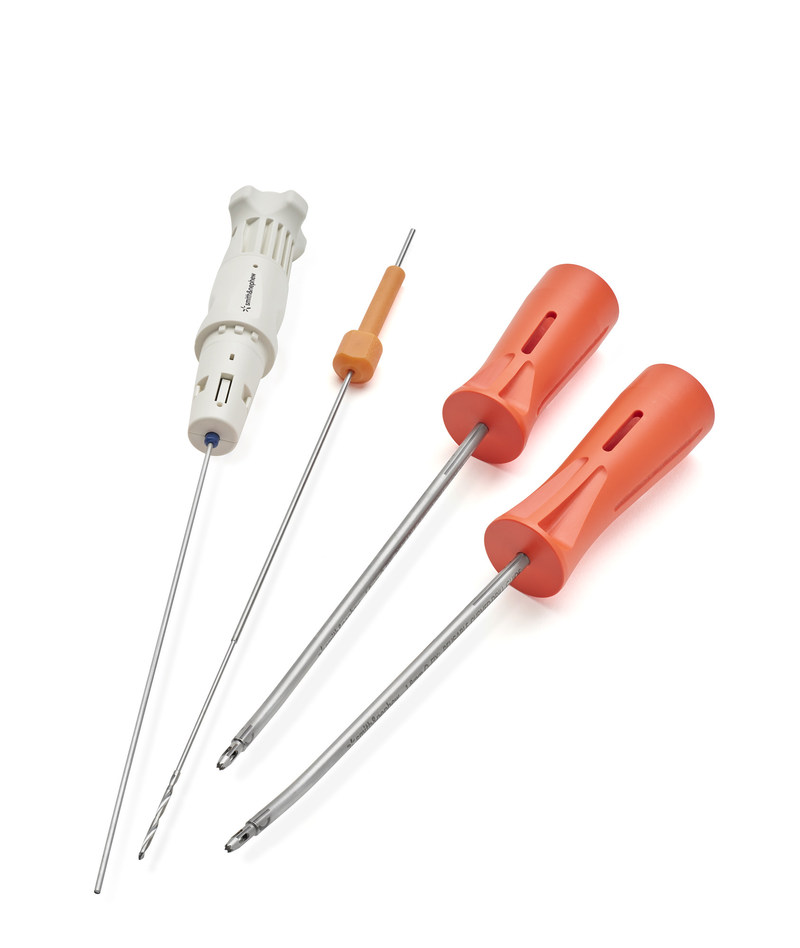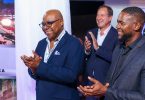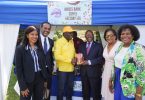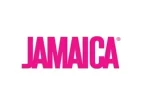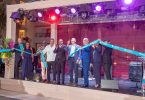LONDON, March 6, 2018 /PRNewswire/ — Smith & Nephew (NYSE: SNN, LSE: SN), the global medical technology business, is pleased to announce the launch of Q-FIX™ CURVED, Q-FIX MINI and SUTUREFIX CURVED All-Suture Anchor systems adding to its growing Sports Medicine portfolio. Designed for procedures where space is limited and the anatomy can be difficult to access, the new SUTUREFIX CURVED, Q-FIX CURVED and MINI delivery systems are designed to aid in optimal suture anchor placement during drilling and insertion.
Q-FIX Curved All-Suture Anchor System
The SUTUREFIX CURVED and Q-FIX CURVED systems improve access and trajectory when drilling bone tunnels. Both systems optimize the curved geometry of the drill guide while also maximizing drilling accuracy. 1 The incorporation of both visual and tactile cues simplifies drill guide orientation for the surgeon and helps to indicate drilling trajectory.
The Company also introduced its Q-FIX MINI All-Suture Anchor, which reduces the tunnel drill depth and implant length to 17.1mm, making it the shortest all-suture anchor in its class.2
“The new Q-FIX CURVED drilling system and Q-FIX MINI represent another advancement by Smith & Nephew in soft tissue fixation,” said Felix H. “Buddy” Savoie III, MD, Chairman of Orthopaedic Surgery and Chief of Sports Medicine at Tulane University School of Medicine. “The curved drilling system improves access to the inferior glenoid while improving the trajectory of the drill bit, thereby reducing the risk of bicortical perforation. And the MINI anchor’s short drill depth improves patient safety, making it more useful in all applications, especially in small joint soft tissue fixation.”
“The unique tapered distal curve of the SUTUREFIX CURVED Drill Guide allows me to place these anchors anywhere that I would like along the acetabular rim,” said Dr. Marc J. Philippon of the Steadman Philippon Research Institute. “The active deployment of this all-suture anchor system greatly reduces displacement and the new curved guide has a better curvature and drilling trajectory than other curved systems on the market.”
“The Q-FIX MINI, Q-FIX CURVED and SUTUREFIX CURVED enable healthcare professionals to access challenging pathology like they have never been able to do before,” said Scott Schaffner, Senior Vice President Global Marketing, Smith & Nephew. “These new products highly complement our Sports Medicine range and we’re proud to offer them as part of our growing portfolio.”
Unlike other all-suture anchors that require the suture strands to be pulled back against the cortical bone in order to deploy them, Smith & Nephew’s Q-FIX and SUTUREFIX All-Suture Anchor platform uses active deployment3, which eliminates manual tensioning and makes deployment more reliable4, ultimately resulting in improved biomechanical performance among all-suture anchors.5,6,7
About Smith & Nephew
Smith & Nephew is a global medical technology business dedicated to helping healthcare professionals improve people’s lives. With leadership positions in Orthopaedic Reconstruction, Advanced Wound Management, Sports Medicine and Trauma & Extremities, Smith & Nephew has around 15,000 employees and a presence in more than 100 countries. Annual sales in 2017 were almost $4.8 billion. Smith & Nephew is a member of the FTSE100 (LSE:SN, NYSE: SNN).
GOT NEWS? click here
Google News, Bing News, Yahoo News, 200+ publications
For more information about Smith & Nephew, please visit our website www.smith-nephew.com, follow @SmithNephewplc on Twitter or visit SmithNephewplc on Facebook.com
Forward-looking Statements
This document may contain forward-looking statements that may or may not prove accurate. For example, statements regarding expected revenue growth and trading margins, market trends and our product pipeline are forward-looking statements. Phrases such as “aim”, “plan”, “intend”, “anticipate”, “well-placed”, “believe”, “estimate”, “expect”, “target”, “consider” and similar expressions are generally intended to identify forward-looking statements. Forward-looking statements involve known and unknown risks, uncertainties and other important factors that could cause actual results to differ materially from what is expressed or implied by the statements. For Smith & Nephew, these factors include: economic and financial conditions in the markets we serve, especially those affecting health care providers, payers and customers; price levels for established and innovative medical devices; developments in medical technology; regulatory approvals, reimbursement decisions or other government actions; product defects or recalls or other problems with quality management systems or failure to comply with related regulations; litigation relating to patent or other claims; legal compliance risks and related investigative, remedial or enforcement actions; disruption to our supply chain or operations or those of our suppliers; competition for qualified personnel; strategic actions, including acquisitions and dispositions, our success in performing due diligence, valuing and integrating acquired businesses; disruption that may result from transactions or other changes we make in our business plans or organisation to adapt to market developments; and numerous other matters that affect us or our markets, including those of a political, economic, business, competitive or reputational nature. Please refer to the documents that Smith & Nephew has filed with the U.S. Securities and Exchange Commission under the U.S. Securities Exchange Act of 1934, as amended, including Smith & Nephew’s most recent annual report on Form 20-F, for a discussion of certain of these factors. Any forward-looking statement is based on information available to Smith & Nephew as of the date of the statement. All written or oral forward-looking statements attributable to Smith & Nephew are qualified by this caution. Smith & Nephew does not undertake any obligation to update or revise any forward-looking statement to reflect any change in circumstances or in Smith & Nephew’s expectations.
™ Trademark of Smith & Nephew. Certain marks registered US Patent and Trademark Office.
References:
1. Data on file. Report P/N 15007031 Rev. A, Q-FIX Family Drill Deviation.
2. Data on file. Report P/N 15006934 Rev. A, SUTUREFIX And Q-FIX Family Geometric Claims, page 11.
3. Douglass NP, Behn AW, Safran MR. Cyclic and Load to Failure Properties of All-Suture Anchors in Synthetic Acetabular and Glenoid Cancellous Bone. Arthroscopy. 2017 May;33(5):977-985.e5. doi: 10.1016/j.arthro.2016.11.022. Epub 2017 Jan 26.
4. Byrd, JWT, Jones, KS, Loring, CL, Sparks, SL. Acetabular All-Suture Anchor for Labral Repair: Incidence of Intraoperative Failure due to Pullout Arthroscopy: The Journal of Arthroscopic & Related Surgery Available online 17 January 2018. doi 10.1016/j.arthro.2017.09.049.
5. Erickson J, Chiarappa F, Haskel J, Rice J, Hyatt A, Monica J, Dhawan A. Biomechanical Comparison of a First- and a Second-Generation All-Soft Suture Glenoid Anchor. The Orthopaedic Journal of Sports Medicine, 5(7), 2017. doi.org/10.1177/2325967117717010.
6. Barber AB, Herbert MA. All-Suture Anchors: Biomechanical Analysis of Pullout Strength, Displacement, and Failure Mode. Arthroscopy.2017 Jun;33(6):1113-1121. doi: 10.1016/j.arthro.2016.09.031. Epub 2016 Dec 22.
7. Nagra NS, Zargar N, Smith RD, Carr AJ. Mechanical Properties of All-suture Anchors for Rotator Cuff Repair.Bone Joint Res. 2017 Feb;6(2):82-89. doi: 10.1302/2046-3758.62.BJR-2016-0225.R1.
![]() View original content with multimedia:http://www.prnewswire.com/news-releases/new-q-fix-curved-q-fix-mini-and-suturefix-curved-all-suture-anchor-systems-help-surgeons-access-challenging-pathology-while-improving-the-quality-of-shoulder-and-hip-repairs-300609003.html
View original content with multimedia:http://www.prnewswire.com/news-releases/new-q-fix-curved-q-fix-mini-and-suturefix-curved-all-suture-anchor-systems-help-surgeons-access-challenging-pathology-while-improving-the-quality-of-shoulder-and-hip-repairs-300609003.html
SOURCE Smith & Nephew

